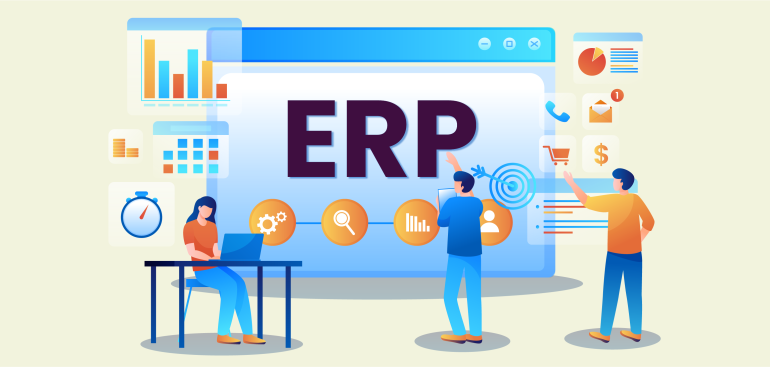Enterprise Resource Planning (ERP) systems have become integral to modern businesses, revolutionizing the way organizations manage their resources, processes, and data. In this comprehensive guide, we’ll explore what ERP is, its key components, benefits, and best practices for successful implementation.
What is ERP?
ERP is a software solution that integrates various business functions and processes into a unified system. It allows organizations to manage core activities such as finance, human resources, supply chain, manufacturing, and customer relationship management (CRM) from a single platform. By centralizing data and automating workflows, ERP systems provide real-time insights and enhance operational efficiency.
Key Components of ERP Systems
- Finance and Accounting: Manage financial transactions, budgeting, invoicing, and reporting processes.
- Human Resources (HR): Streamline HR functions including payroll, employee management, recruitment, and performance evaluation.
- Supply Chain Management (SCM): Optimize supply chain processes such as procurement, inventory management, order fulfillment, and logistics.
- Manufacturing: Improve production planning, scheduling, quality control, and resource allocation in manufacturing operations.
- Customer Relationship Management (CRM): Enhance customer interactions, sales processes, marketing campaigns, and customer support through integrated CRM modules.
- Business Intelligence (BI): Analyze data, generate reports, and gain actionable insights to support decision-making and strategic planning.

Benefits of ERP Systems
- Increased Efficiency: Streamline business processes, eliminate redundant tasks, and improve productivity across departments.
- Data Accuracy and Integration: Centralize data sources, ensure data consistency, and facilitate seamless data exchange between different functions.
- Cost Savings: Reduce operational costs, optimize resource utilization, and identify areas for cost-saving opportunities.
- Improved Decision-Making: Access real-time data, generate accurate reports, and make informed decisions based on data-driven insights.
- Enhanced Customer Experience: Provide better customer service, personalize interactions, and build stronger relationships with customers.
- Scalability and Flexibility: Scale operations easily, adapt to changing business requirements, and accommodate growth without major disruptions.
Best Practices for ERP Implementation
- Define Clear Objectives: Identify specific goals and objectives for implementing ERP, aligning them with your business strategy and growth plans.
- Select the Right ERP System: Choose an ERP solution that meets your industry requirements, scalability needs, budget constraints, and offers essential features and functionalities.
- Plan Thoroughly: Develop a detailed implementation plan, including timelines, milestones, resource allocation, and risk management strategies.
- Train and Educate Users: Provide comprehensive training to employees on using the ERP system effectively, covering modules relevant to their roles and responsibilities.
- Engage Stakeholders: Involve key stakeholders throughout the implementation process, gather feedback, and address concerns to ensure buy-in and support.
- Monitor Performance: Continuously monitor system performance, user adoption rates, KPIs, and ROI to assess the impact of ERP on your business operations.
- Regular Updates and Maintenance: Keep the ERP system updated with the latest patches, upgrades, and enhancements to leverage new features and improve system performance.
Conclusion
ERP systems play a vital role in streamlining business operations, enhancing collaboration, and driving organizational success. By understanding the key components, benefits, and best practices of ERP implementation, businesses can leverage this technology to optimize processes, improve decision-making, and stay competitive in today’s dynamic marketplace.

